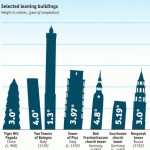As it is prone to throughout a season, the “advanced statistics debate” has flared up again, this time at the site of its currently most volatile flashpoint, Rudy Gay. His trade to Sacramento in what amounted to a salary dump for Toronto has sent a jolt through the established fault lines: blogger/journalist, objective/gut, online/print etc. If your first thought on the matter is, “what a stupid and meaningless argument”, well, you’re right. But if nothing else, at least it lets us know which writers are mailing it in.
The argument is dumb in both the abstract and the specific. In the abstract, there is no bright line separating “basic” statistics from “advanced” ones, and the premise that these two things are different and in opposition to each other is fatally flawed. Throughout NBA history people have tried to find both better qualitative and quantitative ways to understand the game. Look at a box score from 1950; statistics like offensive rebounds, assists and turnovers weren’t included and were the “advanced” statistics of their day but eventually became commonplace, just like pace, possessions, rebound rate and others are well on their way to becoming today.
It is even dumber in the specific, and it is incredible that “Rudy Gay Is A Star” is the hill that some have chosen to die on. On his rookie contract, Rudy Gay was a good, young, improving player who you could’ve reasonably said would develop into the third best player on a championship team. But then the Grizzlies signed him to a stupid big contract, and the lockout and its resultant collective bargaining agreement made the contract look even worse.
![]()
In summer 2012 the Grizzlies were bought by a young, innovative owner who soon thereafter hired ESPN’s John Hollinger, creator of PER and the most well-known statistically-inclined writer, as VP of basketball operations. The first big move after Hollinger’s hire was trading Rudy Gay to Toronto, and in a hilariously rash and just plain insulting column, Adrian Wojnarowski criticized the trade and called Hollinger, “a statistician who worked for a cable sports company.”
The roots of Rudy Gay-as-analytics-flashpoint are in that one-sided feud between Wojnarowski and Hollinger, with the anti-advanced stats crowd lining up behind Wojnarowski and, well, everybody else lining up behind Hollinger because there isn’t an actual debate here. A debate implies that there are valid arguments on multiple sides, but in the case of Rudy Gay’s value there is not: he is very overpaid for his production, which lies somewhere between below average and slightly below average.
![]()
Remember that box score from 1950, and how two of the only things it included were field goals and field goal attempts? Field goal percentage is one of the very first basketball statistics—simple division, as far away from “advanced” as you can get—and still one of the most important. Last year Rudy Gay shot 42% overall and 32% on threes, and this season he’s off to a blistering 40% start. With a league average field goal percentage of 45% each of the last two seasons, it doesn’t take anything advanced to render the judgment that Gay is an inefficient offensive player, and watching him on defense the adjective you are struck by is “indifferent.” After he was traded last season the Memphis Grizzlies actually improved their winning percentage, and with Gay over parts of the past two seasons the Raptors went 24–30 overall in the weak East, hardly the mark expected for a man who is the 15th highest paid player in the league.
Now, that’s not to say Rudy Gay isn’t good enough in the NBA. That’s the brush the anti-advanced stats crowd uses to tar, charging that saying, “Rudy Gay is inefficient and not worth his contract” is the same thing as, “he doesn’t belong in the NBA.” In fact, depending upon your advanced all-in-one metric of choice, Rudy Gay has had several seasons of play that ranged from a little below average to a little above it. Average isn’t world beating, but it’s better than half the players in the NBA. It’s something.
It is entirely logical and coherent to still be a believer in Rudy Gay, but an argument for him in Sacramento requires a bit of nuance. For instance, Tom Ziller argues that by reducing his usage rate, Gay can return to being an above average league scorer. If Gay’s 8–12 and 10–20 games for the Kings are any indication, maybe he is onto something. And in a series of tweets Marcus Thompson, former Warriors beat writer and as “traditional” of a writer as they come, laid out a scenario wherein Gay could thrive.
Thus we’ve reached at least somewhat of a consensus conclusion on Rudy Gay. He hasn’t played very well over the past couple of seasons, and most think he will remain playing poorly. Some are optimistic that he will be better, and lay out what needs to be different for him to play better. A boring, reasonable, sober, safe conclusion; hence the reason I refer to it as a “debate” with ironic quotations and call it “stupid and meaningless.”
One of the few positives of these every-few-month flashpoints, however, is they alert the wider basketball reading public to the NBA writers that still, somehow, just don’t get it. If a writer can’t understand that Rudy Gay isn’t a very good player anymore (and was never a great one), they probably don’t deserve your eyeballs.
Writers like Sports Illustrated’s Ian Thomsen, whose mailbag column title is, “Talent gap widens with Gay joining West” and wrote that Gay becomes the Kings’ second-best player, despite the fact that Isaiah Thomas, DeMarcus Cousins, Travis Outlaw, Luc Mbah a Moute and perhaps others have all had better seasons. To be fair to Thomsen it is a mailbag piece that packs in quick reactions to many different things, but if his snap reaction is that 14th place and already six games out Kings are “probably” going to fall short of the playoffs and not “obviously”, it doesn’t bode well for a fuller, better analysis of the trade.
That’s nothing compared to the doozy the Sacramento Bee’s Jason Jones wrote, however. The logic of Jones’ piece—which is very difficult to follow because there isn’t very much of it there—is that the Kings aren’t worried about having three high usage players, and that Rudy Gay is going to buy into “a system.” Jones uses a severely outdated calculation of usage that I’ve honestly never seen before, and doesn’t seem to understand that the problem with Gay’s usage rate isn’t so much how it fits next to other high usage players (though that is a concern) but how inefficiently he uses it. What “a system” is isn’t really described besides noting that he will be playing with DeMarcus Cousins, nor does it address why Gay didn’t buy into “a system” in Memphis or Toronto. The coup d ‘grace of an already terrible piece though, is the final nonsensical paragraph:
Yes, the Kings know the numbers. They just don’t care about them. In some cases, numbers don’t tell the whole story and they believe Gay’s talent will trump all analytics.
You might think it’s unfair to call out a writer for a single column—and anybody that has a big enough archive is bound to have some duds—and a lot of the time I’d agree with you. But these run-of-the-mill, logic absent pieces are indicative of a much larger problem in a writer’s corpus: a failure of lifelong learning and lack of ambition to remain relevant.
In any vocation—writing is not excepted—growth is necessary. It’s why there is professional development, continuing education, trainings, in-services, conferences and the like. You can’t expect to know everything or have perfected a craft at 22, especially when that craft has changed dramatically over a lifetime. Show me someone unwilling to learn new techniques, skills and strategies and I’ll show you someone whose livelihood is at risk.
![]()
That’s not to say basketball writers have to be all in on advanced stats. There are plenty of very fine writers who don’t really utilize analytics. My co-editor of The Diss is one of them, as are some of my very favorite writers like Jonathan Abrams, Adam Lauridsen, Nathaniel Friedman and many others. The difference is they aren’t hostile to the changing of our collective understanding of how the game is played, and they don’t demonize something before the effort to understand it.
Ian Thomsen and Jason Jones have been added to my imaginary “Don’t Bother Reading” list. Not because they don’t use or don’t understand analytics, but because they insist on conducting player and team evaluation with the tools of the 1990s.
It’s almost 2014. I’m not going to use dial-up internet, a Zach Morris cell phone or cursive either.






























































